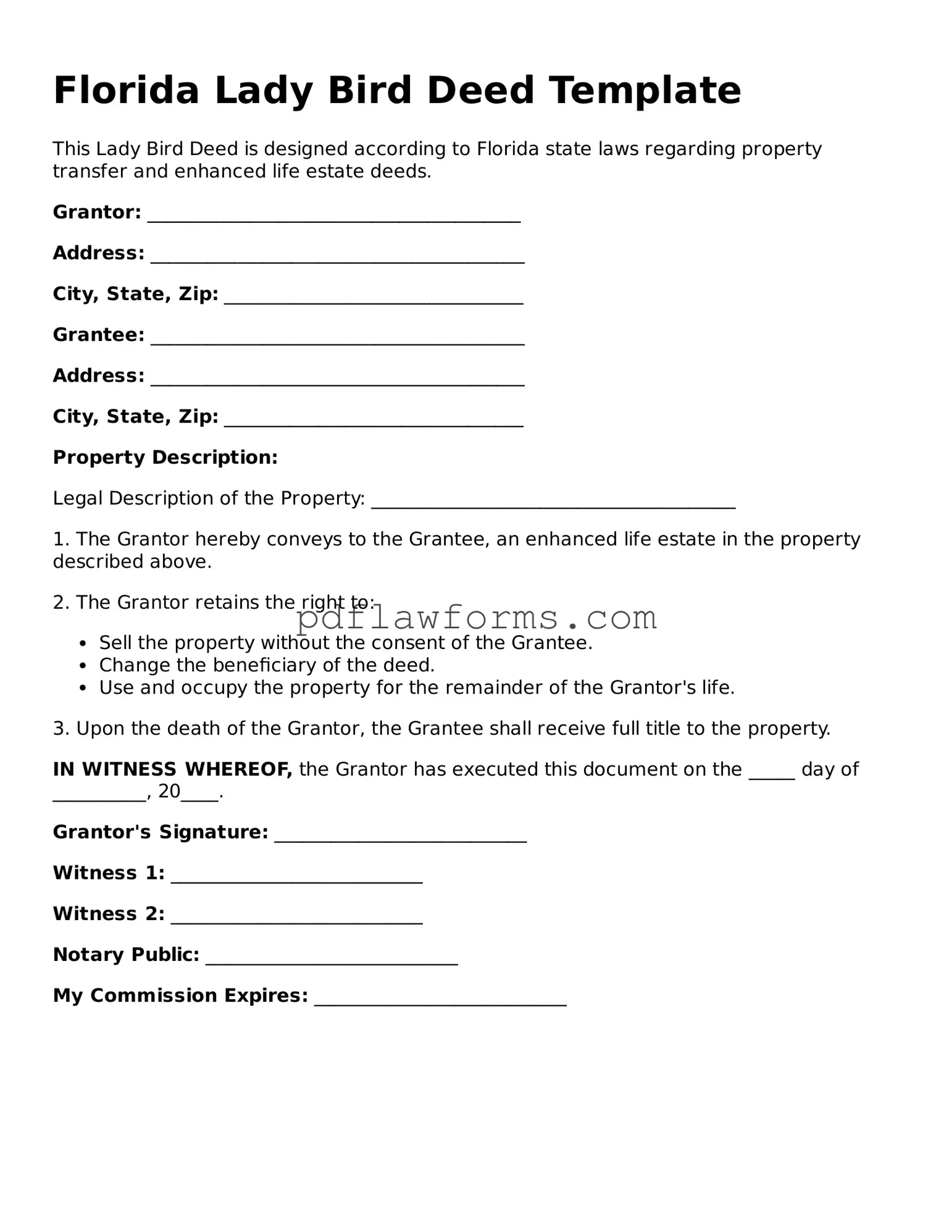The Florida Lady Bird Deed, a unique estate planning tool, offers homeowners an innovative way to transfer property while retaining control during their lifetime. This deed allows property owners to designate beneficiaries who will automatically inherit the property upon their passing, thereby avoiding the often lengthy and costly probate process. One of the key features of the Lady Bird Deed is that it enables the original owner to maintain full rights to the property, including the ability to sell, mortgage, or change the beneficiaries at any time. This flexibility is particularly beneficial for individuals who wish to ensure their loved ones receive their property without the complications that can arise from traditional wills. Additionally, the Lady Bird Deed can provide certain tax advantages, as it may help in minimizing estate taxes. Understanding the intricacies of this form is essential for anyone considering it as part of their estate planning strategy, as it can significantly impact the transfer of assets and the financial well-being of heirs. With its combination of control, simplicity, and potential tax benefits, the Florida Lady Bird Deed stands out as a valuable option for many property owners in the state.
